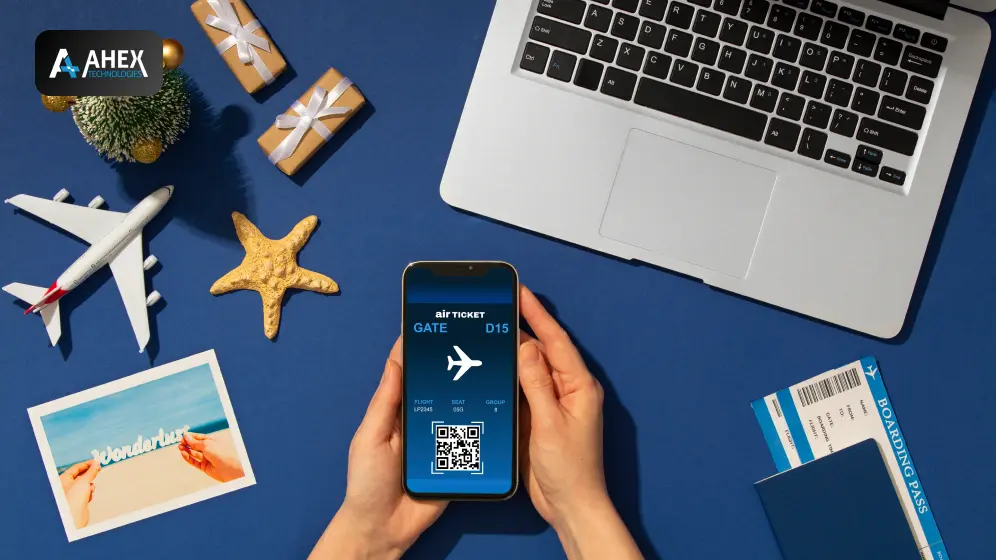
In an era where smartphones are ubiquitous, the travel industry is undergoing a digital revolution, with tourism app development emerging as a transformative trend. This article explores the reasons behind the uprising trend of tourism app development, its impact on the travel industry, and the key features that make these apps indispensable for modern travelers.
Table of Contents
- Introduction
- The Shift to Digital in the Travel Industry
- Why Tourism App Development is Trending
- 1.1 Accessibility and Convenience
- 1.2 Personalization and Recommendations
- 1.3 Real-Time Information and Navigation
- 1.4 Integration of Augmented Reality (AR)
- 1.5 Social Connectivity
- Key Features of Trendsetting Tourism Apps
- 1.1 Seamless Booking and Reservation
- 1.2 Personalized Recommendations
- 1.3 Real-Time Navigation and Exploration
- 1.4 Integration of Augmented Reality (AR)
- 1.5 Social Connectivity
- Impact on Travel Businesses
- Challenges and Solutions in Tourism App Development
- The Future of Tourism App Development
- Conclusion
Introduction
The travel landscape has evolved, and with it, the expectations of modern travelers. Tourism app development is at the forefront of this evolution, providing a digital gateway to enhanced travel experiences. Let’s delve into why this trend is on the rise and how it’s reshaping the way people explore the world.
The Shift to Digital in the Travel Industry
The traditional modes of planning and experiencing travel are giving way to digital solutions. Travelers are increasingly relying on their smartphones to plan itineraries, book accommodations, discover local attractions, and share their experiences in real-time. This shift has catalyzed the rise of tourism app development.
Why Tourism App Development is Trending
1.1 Accessibility and Convenience
Tourism apps offer users the convenience of having all travel-related information and services in one place. From flight bookings to hotel reservations, users can access and manage their entire itinerary with a few taps on their smartphones.
1.2 Personalization and Recommendations
Advanced algorithms in tourism apps analyze user preferences and behavior, offering personalized recommendations for accommodations, activities, and dining options. This personal touch enhances the overall travel experience.
1.3 Real-Time Information and Navigation
Tourism apps provide real-time information about local attractions, events, and weather conditions. Integrated navigation features guide users through unfamiliar territories, ensuring a seamless and stress-free travel experience.
1.4 Integration of Augmented Reality (AR)
The integration of AR in tourism apps adds an immersive layer to travel experiences. AR features can provide historical information about landmarks, translate foreign signs in real-time, and even simulate what certain destinations will look like at different times of the day.
1.5 Social Connectivity
Tourism apps often incorporate social features, allowing users to share their travel experiences, recommendations, and photos with their social networks. This not only fosters a sense of community among travelers but also serves as a source of inspiration for others.
Key Features of Trendsetting Tourism Apps
1.1 Seamless Booking and Reservation
Trendsetting tourism apps streamline the booking and reservation process. Users can book flights, accommodations, and activities directly within the app, eliminating the need to switch between multiple platforms.
1.2 Personalized Recommendations
The ability to provide personalized recommendations based on user preferences and past behavior sets trendsetting tourism apps apart. Machine learning algorithms analyze user data to offer tailored suggestions for activities, dining, and attractions.
1.3 Real-Time Navigation and Exploration
Integrated maps and navigation features enable users to explore destinations with confidence. Real-time information about local points of interest, traffic conditions, and public transportation options enhances the travel experience.
1.4 Integration of Augmented Reality (AR)
Incorporating AR features brings an innovative dimension to tourism apps. Users can engage with their surroundings in new ways, such as accessing historical information about landmarks or viewing virtual guides overlaid on the real world.
1.5 Social Connectivity
The integration of social features allows users to share their travel experiences and recommendations with friends and followers. This social connectivity not only enhances the user experience but also serves as a powerful marketing tool for destinations and businesses.
Impact on Travel Businesses
It’s development isn’t just advantageous for travelers; it has a profound impact on businesses in the travel industry. By embracing digital platforms, businesses can:
- Expand Reach: Reach a global audience and attract travelers from diverse demographics.
- Enhance Customer Engagement: Interact with customers throughout their journey, from planning to post-trip reflections.
- Improve Service Personalisation: Leverage data insights to tailor services and offers based on individual preferences.
Challenges and Solutions in Tourism App Development
While the trend is promising, challenges in tourism app development include:
- Data Security: Implement robust security measures to protect user data and transactions.
- User Experience: Prioritise a user-friendly interface and seamless navigation to enhance the overall experience.
- Integration Complexity: Overcome challenges related to integrating with third-party services and ensuring a smooth user experience.
The Future of Tourism App Development
The future of tourism app development holds exciting possibilities:
- Enhanced AI Integration: Advanced AI algorithms will offer more sophisticated personalization and predictive features.
- Blockchain for Transactions: Blockchain technology may be used for secure and transparent financial transactions within apps.
- Virtual Reality (VR) Integration: VR features could provide virtual previews of destinations and attractions, allowing users to experience them before they travel.
Conclusion
Tourism app development is not just a trend; it’s a transformative force reshaping how people approach and experience travel. The blend of accessibility, personalization, and immersive technologies has elevated the travel experience to new heights. As the trend continues to evolve, the tourism industry is poised for a digital future where every journey is enhanced by the power of smart, connected, and user-centric applications.







